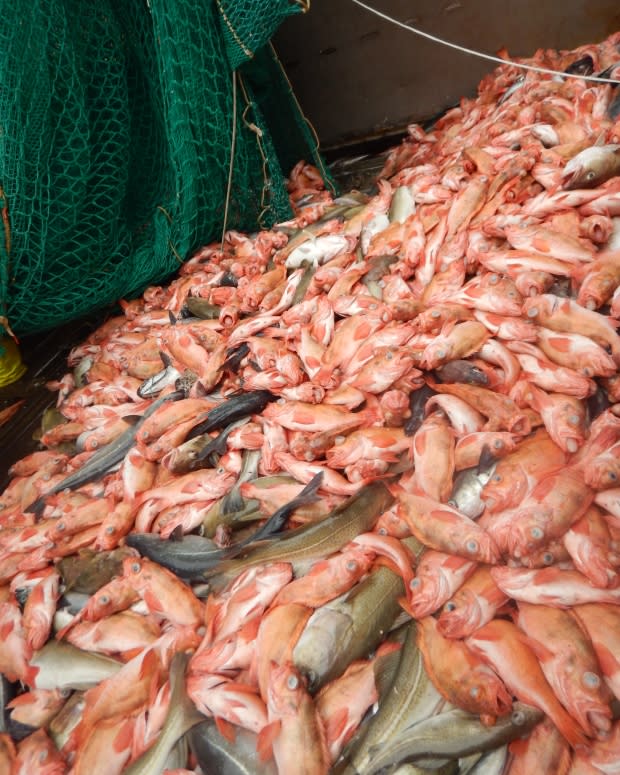Could a redfish trawling bonanza zap the Maritime Link?
Owners of the Maritime Link are exploring whether the two subsea electrical cables between Newfoundland and Nova Scotia will need to be better protected from fishing gear when seafood companies begin harvesting an exploding biomass of redfish in the region.
Scientists say there are at least 2.5 million tonnes of redfish in the Gulf of St. Lawrence, and that is expected to trigger an Atlantic Canadian fishing bonanza — including more bottom trawling — when the fish reach harvest size in a year or two.
Nova Scotia Power Maritime Link Ltd. spokesperson Jeff Myrick said the company is in regular contact with the Department of Fisheries and Oceans and is "assessing the location of potential future fishing activity, the gear used, and the depths at which redfish may be harvested."
The subsidiary of Halifax-based Emera Inc. disclosed in a first-quarter update filed with the Nova Scotia Utility and Review Board that it was evaluating whether the cables that cross the Cabot Strait needed additional protection from fishing gear.
"The team will use this information to assess the likelihood of any risk presented by activity near the cables and then determine if further protective measures are required, such as additional rock cover or trenching," Myrick said.

The 170-kilometre subsea portion of the Maritime Link, which runs between Cape Ray, N.L., and Point Aconi in Cape Breton, was built to deliver electricity generated at Muskrat Falls in Labrador to Nova Scotia and New England.
The cables are 10 centimetres wide — about the width of a two-litre soda bottle. They were laid on the ocean floor in April and May 2017 and went into service in February 2018.
Since then the lines have carried electricity to Newfoundland while the much-delayed Muskrat Falls hydro project is being completed.
'Huge increase' in fishing ahead
Also known as ocean perch, redfish is sold both fresh and as frozen food in Europe, Asia and North America.
Jan Voutier, who manages redfish processing for Louisbourg Seafoods Ltd. in Cape Breton, said Emera is right to prepare.
"There is definitely going to be a huge increase in effort on redfish in the future and issues with cables could become more prevalent," Voutier said from the company's plant in Glace Bay, N.S.
Both of the 200-kilovolt subsea Maritime Link cables are clearly identified on navigational charts and it is the responsibility of fishermen to avoid them and other subsea cables that cross the Cabot Strait.
Voutier said gear occasionally contacts and moves subsea cables.
"At any given time you could have a fair amount of distance that these cables are drug from where they originally set so that we do occasionally end up with an issue with a cable being hooked," he said. "But it's the main focus of the industry to stay away from these cables."
Has it already happened?
Several subsea telecommunications cables off the coast of Atlantic Canada have been damaged by vessels in recent years. In 2015, Eastlink sued the owner of the Oceans Joy for $1 million after a cable between Rose Blanche, N.L., and Sydney, N.S., was snapped.
A year earlier, a Greenland telecommunications company went after the owners of a Halifax trawler for $2 million related to damage to its cable off Newfoundland.
In its recent regulatory filing, Nova Scotia Power Maritime Link disclosed that a survey last year identified "cable contact from a dragged object" in deep water, but damage was later determined to be superficial.
The cause was not disclosed. The company said its investigation will continue.
Myrick said the company does not know if an expanded redfish harvest will actually present additional risk to the Maritime Link, but planning for it is part of "on-going risk management."
In 2018, Nova Scotia Power Maritime Link began using real-time vessel tracking system to monitor abnormal vessel movements near the cables.

